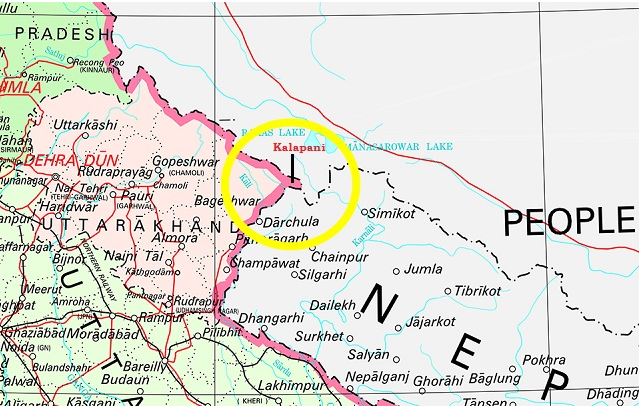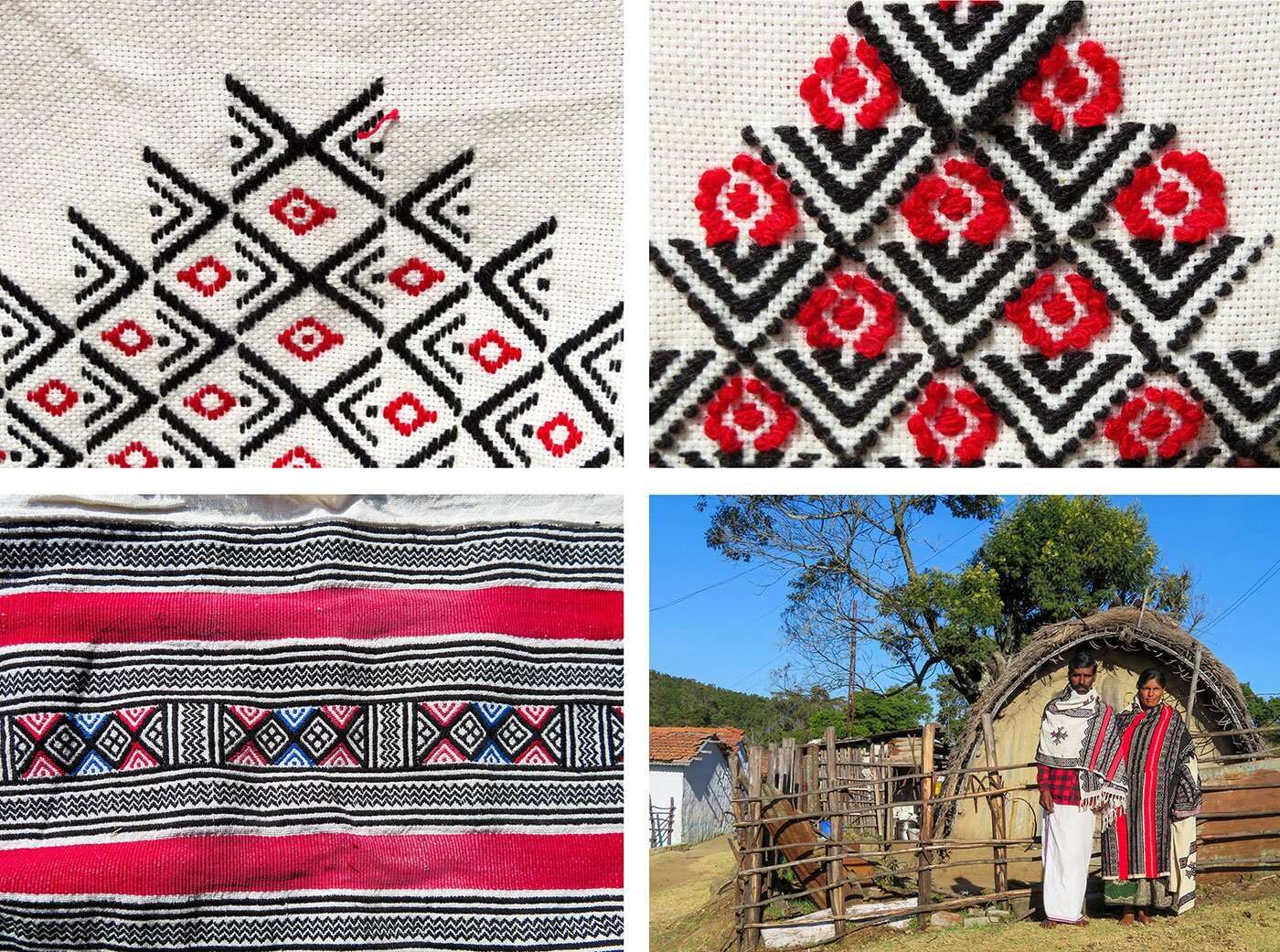Face-off Between India and China
Why in News
Recently, Indian and Chinese troops engaged in a temporary and short duration face-off along the Line of Actual Control (LAC) at Naku La (Sikkim) and near Pangong Tso Lake (Eastern Ladakh).
Naku La
- Naku La sector is a pass at a height of more than 5,000 metres above Mean Sea Level (MSL) in the state of Sikkim.
- It is located ahead of Muguthang or Cho Lhamu (source of River Teesta).
- At Muguthang, the road on the Chinese side is motorable, and on the Indian side, it is a remote area.
- The other passes located in the state of Sikkim are Nathu La Pass and Jelep La Pass.
Pangong Tso Lake
- Pangong Lake is located in the Union Territory of Ladakh.
- It is situated at a height of almost 4,350m and is the world’s highest saltwater lake.
- Extending to almost 160km, one-third of the Pangong Lake lies in India and the other two-thirds in China.
Key Points
- The temporary and brief face-offs occur because the unresolved and undemarcated boundary issues.
- The India-China border shares the 3,488-km-long Line of Actual Control.
- Both countries have differing perceptions owing to the undemarcated boundary, which lead to transgressions and face-offs as each side patrols up to the areas.
- Any such issue is resolved through the mutually established protocols to maintain peace and tranquillity on the border. The resolving mechanism also involves the local Border Personnel Meeting (BPM).
- These protocols with China have been established to resolve issues amicably at the local formation commander level.
- The recent clash happened three years after the Doklam stand-off between India and China (2017), which was also experienced across the border in Sikkim.
- Doklam, or Donglang in Chinese, is an area spread over less than a 100 sq km comprising a plateau and a valley at the trijunction between India, Bhutan and China.
- The Doklam issue was discussed in the Wuhan Summit (2018) and two nations decided to issue "strategic guidance" to their militaries to strengthen communications so that they can build trust and understanding.
| McMahon Line | Line of Actual Control |
|
|
|
|
|
|
Global Examples of Aggressive Diplomacy by China
- Covid-19 Origin:
- China has been engaged in aggressive diplomacy with western countries, which have sought clarity on the origins of the Covid-19 pandemic that has crippled the world economy, and led to almost four million people across the globe falling ill.
- South China Sea:
- It has also reported that China has established new administrative districts for the Spratly and Paracel archipelagos in the South China Sea.
- China has also named 80 islands and other geographical features in the sea, claiming sovereignty over underwater features in the contested region.
India-Nepal on Kailash Mansarovar Link Road
Why in News
Nepal has strongly objected to the newly inaugurated link road which connects Pithoragarh (Uttarakhand) to Lipulekh pass (China border) significantly reducing the time of Kailash Mansarovar Yatra.
- Nepal claims the territory at the Lipulekh pass around 400 sq km area east of Kali river in the tri-junction of Nepal, Tibet and India, through which the road passes as its own.
Key Points
- Nepal's Stand
- Nepal referred to the 2014 agreement between Prime Ministers of both countries, for Foreign Secretaries to work out the “outstanding boundary issues” on Kalapani (where Lipulekh lies) and Susta (bordering Bihar).
- According to Nepal’s Foreign Ministry, the unilateral decision to build a road there, is a breach of the 2014 agreement.
- For evidence, Nepal has the maps during the 1816 Sugauli treaty and other complementing treaties that followed, fixing that Limpiadhura, Kalapani and Lipulekh were shown east of Kali river and part of Nepal.
- These arrangements were made following Nepal’s war with the British due to which Nepal had to cede a large part of territory which currently forms the present Uttarakhand.
- Nepal seeks to question China as well because China and India had signed an agreement in May 2015 to develop Lipulekh as a commercial passage without consulting Nepal which majorly affected the triangulation of the countries.
- The government of Nepal remains committed to seek diplomatic solutions to the boundary issues on the basis of historical treaty, documents, facts and maps in keeping with the spirit of close and friendly bilateral ties between the two countries.
- Nepal referred to the 2014 agreement between Prime Ministers of both countries, for Foreign Secretaries to work out the “outstanding boundary issues” on Kalapani (where Lipulekh lies) and Susta (bordering Bihar).
Kali River
- It is also known as Sharda river or Kali Ganga in Uttarakhand.
- It joins Ghagra river in Uttar Pradesh, which is a tributary of Ganga.
- River Projects: Tanakpur hydro-electric project, Chameliya hydro-electric project, Sharda Barrage.
Lipulekh Pass
- It is also known as Lipu-Lekh Pass/Qiangla or Tri-Corner is a high altitude mountain pass situated in the western Himalayas with a height of 5,334 metre or 17,500 feet.
- It is an International mountain pass between India, China and Nepal.
- India’s Response
- According to India’s Ministry of External Affairs, the road going through Pithoragarh lies completely within the territory of India.
- The road follows the pre-existing route used by the pilgrims of the Kailash Mansarovar Yatra which has been made pliable for the ease and convenience of pilgrims, locals and traders, under the present project.
- India held that the boundary delineation exercise with Nepal is in process and it is committed to resolving outstanding boundary issues through diplomatic dialogue.
- Other Issues
- In November 2019, Nepal protested against the publication of Indian maps that included the Kalapani area.
- However, India rejected Nepal’s contention, asserting that the map accurately depicts the sovereign territory of India.
- Both nations are in the process of scheduling foreign secretary-level talks, which will be held once dates are finalised after the two governments have successfully dealt with the challenge of Covid-19.
Mission Sagar
Why in News
India has sent Indian Naval Ship (INS) Kesari, carrying food items and medical assistance teams, to countries in the southern Indian Ocean to deal with Covid-19 pandemic as part of a "Mission Sagar" initiative.
Key Points
- The countries including Maldives, Mauritius, Madagascar, Comoros and Seychelles had requested India for assistance in dealing with the Covid-19 pandemic.
- Mauritius, Madagascar, Comoros and Seychelles along with La Réunion are part of Indian Ocean Commission. India has recently become an observer to the Commission.
- This is the first time that a single assistance mission is covering all island countries of the western Indian Ocean in one go — except Sri Lanka, for which a second set of medicines have been airlifted.
- The assistance is in line with India’s role as the first responder in the Indian Ocean region.
- It highlights the importance accorded by India to relations with her neighbouring countries and further strengthens the existing bond.
- The deployment is also in consonance with the Prime Minister's vision of Security and Growth for All in the Region (SAGAR).
- Under the Mission, India will
- Deploy Medical Assistance Teams in Mauritius and Comoros, helping their Governments deal with Covid emergency and in case of Comoros, with dengue fever also.
- Deliver consignments of Covid related essential medicines to Mauritius, Madagascar, Comoros and Seychelles and about 600 tonnes of food items to Maldives.
- In addition, in case of Mauritius, a special consignment of Ayurvedic medicines is also being sent.
- The consignments also include Hydroxychloroquine tablets.
SAGAR
- Security and Growth for All in the Region (SAGAR) was launched in 2015. It is India’s strategic vision for the Indian Ocean Region (IOR).
- Through SAGAR, India seeks to deepen economic and security cooperation with its maritime neighbours and assist in building their maritime security capabilities.
- Further, India seeks to safeguard its national interests and ensure Indian Ocean region to become inclusive, collaborative and respect international law.
- The key relevance of SAGAR emerges when seen in conjunction with India’s other policies impacting the maritime domain like Act East Policy, Project Sagarmala, Project Mausam, India as ‘net security provider’, focus on Blue Economy etc.
Data Related to Birth Rate and Death Rate
Why in News
Recently, the Registrar General of India released data related to birth rate, death rate and infant mortality rate in its Sample Registration System (SRS) bulletin for 2018.
- The rates are calculated per one thousand of the population.
Key Points
- Birth rate:
- India’s birth rate has declined drastically over the last four decades from 36.9 in 1971 to 20.0 in 2018.
- The rural-urban differential has also narrowed. However, the birth rate has continued to be higher in rural areas compared to urban areas.
- Bihar (26.2) continues to remain at the top of list in birth rate while Andaman and Nicobar (11.2) is at the bottom.
- Birth rate is a crude measure of fertility of a population and a crucial determinant of population growth.
- Death rate:
- The death rate of India has witnessed a significant decline over the last four decades from 14.9 in 1971 to 6.2 in 2018.
- In the last decade, death rate at an all-India level has declined from 7.3 to 6.2.
- The decline has been steeper in rural areas.
- Chhattisgarh has the highest death rate at 8 and Delhi, an almost entirely urban state, has a lowest death rate of 3.3.
- Mortality is one of the basic components of population change. The data related to it is essential for demographic studies and public health administration.
- Infant mortality rate:
- IMR has decreased to 32 about one-fourth as compared to 1971 (129).
- The IMR at an all-India level has declined from 50 to 32 in the last decade.
- Madhya Pradesh has the highest IMR of 48 and Nagaland has the lowest IMR of 4.
- Infant mortality is the number of deaths of children under one year of age per 1000 live births.
Sample Registration System
- The SRS is a demographic survey for providing reliable annual estimates of infant mortality rate, birth rate, death rate and other fertility and mortality indicators at the national and sub-national levels.
- It was initiated on a pilot basis by the Registrar General of India in a few states in 1964-65, it became fully operational during 1969-70.
- The field investigation consists of continuous enumeration of births and deaths in selected sample units by resident part time enumerators, generally anganwadi workers & teachers, and an independent survey every six months by SRS supervisors. The data obtained by these two independent functionaries are matched.
Registrar General of India
- Registrar General of India was founded in 1961 by the Government of India under the Ministry of Home Affairs.
- It arranges, conducts and analyses the results of the demographic surveys of India including Census of India and Linguistic Survey of India.
- The position of Registrar is usually held by a civil servant holding the rank of Joint Secretary.
Feluda Test for Covid-19
Why in News
Recently, the Council of Scientific and Industrial Research’s Institute of Genomics and Integrative Biology (CSIR-IGIB) has developed India’s first paper strip test for Covid-19 namely, ‘Feluda’.
Key Points
- Description:
- The Feluda is a paper strip test that detects the coronavirus in an hour.
- Feluda is an acronym for FNCAS9 Editor Linked Uniform Detection.
- It is expected to help to fulfil an urgent need of the rapid testing in India.
- It is the first such indigenous test kit to be developed in India based on Clustered Regularly Interspaced Short Palindromic Repeats (CRISPR) technology.
- CRISPR is a gene editing technology, which replicates natural defence mechanisms in bacteria to fight virus attacks, using a special protein called Cas9.
- CRISPR-Cas9 technology behaves like a cut-and-paste mechanism on DNA strands that contain genetic information. The specific location of the genetic codes that need to be changed, or edited, is identified on the DNA strand, and then, using the Cas9 protein, which acts like a pair of scissors, that location is cut off from the strand.
- A DNA strand, when broken, has a natural tendency to repair itself. Scientists intervene during this auto-repair process, supplying the desired sequence of genetic codes that binds itself with the broken DNA strand.
- Comparison to the RT-PCR Test:
- Working Principle: The Feluda test uses the gene-editing tool-Crispr-Cas9 to target and identify genomic sequences of the novel coronavirus in suspected individual samples.
- RT-PCR test (Reverse Transcription Polymerase Chain Reaction) detects the virus genetic material, which is the Ribonucleic acid (RNA) .
- Cost: The Feluda test will cost less than Rs.500 compared to Rs. 4500 for the real-time PCR test which is currently being used for Covid-19 diagnosis in India.
- Required Medical Machinery: The Feluda test also does not rely on expensive real-time PCR machines for RNA isolation, DNA conversion, and amplification which are already in limited supply in the country.
- Working Principle: The Feluda test uses the gene-editing tool-Crispr-Cas9 to target and identify genomic sequences of the novel coronavirus in suspected individual samples.
RBI’s Gold Reserve Increased
Why in News
According to the ‘Report on Management of Foreign Exchange Reserves’, the Reserve Bank of India’s total holdings of gold reached 653.01 tonnes in the financial year 2019-20.
- The Reserve Bank of India publishes half-yearly reports on management of foreign exchange reserves as part of its efforts towards enhanced transparency and levels of disclosure.
- These reports are prepared half yearly with reference to the position as at end-March and end-September each year.
Key Points
- The RBI’s total gold reserves were 612.56 tonnes in the preceding fiscal ended March 2019.
- The addition of 40.45 tonnes of gold has raised the value of gold reserves to $30.57 billion by March 2020 from $23.07 billion in March 2019.
- The share of gold in the total foreign exchange (forex) reserves rose from about 5.59% as of March 2019 to about 6.40% by March 2020.
- India’s Forex Reserve include: Foreign Currency Assets, Gold reserves, Special Drawing Rights and Reserve position with the International Monetary Fund (IMF)
- Around 360.71 tonnes of gold is held overseas in safe custody with the Bank of England and the Bank for International Settlements, while the remaining gold is held domestically.
- The gold reserves will help the central banks around the globe to focus on the measures needed to contain the economic impact of Covid-19.
- Gains or losses on valuation of foreign currency assets and gold due to movements in the exchange rates and/or price of gold are booked under a balance sheet head named the Currency and Gold Revaluation Account (CGRA).
- CGRA represents the value of the gold and foreign currency that the RBI holds on behalf of India.
- It shows funds that are available to compensate RBI’s loss in the value of gold and foreign exchange reserve holdings.
- The balances in CGRA provide a buffer against exchange rate/gold price fluctuations.
Gold & Economy
- As Currency:
- Gold was used as the world reserve currency up through most of the 20th century. The United States used the gold standard until 1971.
- The paper money had to be backed up by equal amounts of gold in their reserves.
- Although the gold standard has been discontinued, some economists feel that we should return to it due to the volatility of the U.S. dollar and other currencies.
- As a hedge against inflation:
- The demand for gold increases during inflationary times due to its inherent value and limited supply. As it cannot be diluted, gold is able to retain value much better than other forms of currency.
- Strength of Currency:
- When a country imports more than it exports, the value of its currency will decline.
- On the other hand, the value of its currency will increase when a country is a net exporter.
- Thus, a country that exports gold or has access to gold reserves will see an increase in the strength of its currency when gold prices increase, since this increases the value of the country's total exports.
- Since, the central banks rely on printing more money to buy gold, they create an excess supply of the currency. This increases the supply and thereby reduces the value of the currency used to purchase it.
Gopal Krishna Gokhale
Why in News
The Prime Minister paid tribute to Gopal Krishna Gokhale on his 154th birth anniversary.
- Gopal Krishna Gokhale was a great social reformer and educationist who provided exemplary leadership to India's freedom movement.
Key Points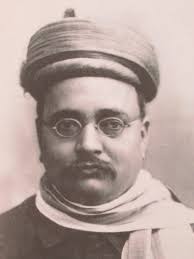
- Birth: Gopal Krishna Gokhale was born on 9 May 1866 in Kotluk village in present-day Maharashtra (then part of the Bombay Presidency) in a Brahmin family.
- Ideology:
- Gokhale worked towards social empowerment, expansion of education , struggle for freedom in India for three decades and rejected the use of reactionary or revolutionary ways.
- Role in Colonial Legislatures:
- Between 1899 and 1902, he was a member of the Bombay Legislative Council followed by work at the Imperial Legislative Council from 1902 till his death (1915).
- At the Imperial legislature, Gokhale played a key role in framing the Morley-Minto reforms of 1909.
- Role in INC:
- He was associated with the Moderate Group of Indian National Congress (joined in 1889).
- He became president of INC in 1905 in Banaras session.
- This was the time when bitter differences had arisen between his group of ‘Moderates’ and the ‘Extremists’ led by Lala Lajpat Rai and Bal Gangadhar Tilak among others. The two factions split at the Surat session of 1907.
- Despite the ideological difference, in 1907, he intensely campaigned for the release of Lala Lajpat Rai, who was imprisoned that year by the British at Mandalay in present-day Myanmar.
- Related Societies and Other Works:
- He established the Servants of India Society in 1905 for the expansion of Indian education.
- He was also associated with the Sarvajanik sabha journal started by Govind Ranade.
- In 1908, Gokhale founded the Ranade Institute of Economics.
- He started english weekly newspaper, The Hitavada (The people's paper).
- Mentor to Gandhi:
- As a liberal nationalist, he is regarded by Mahatma Gandhi as his political guru.
- Gandhi wrote a book in Gujarati dedicated to the leader titled ‘Dharmatma Gokhale’.
480th Birth Anniversary of Maharana Pratap
Why in News
Recently, the Prime Minister and Vice President of India paid tributes to Maharana Pratap on his 480th birth anniversary.
Maharana Pratap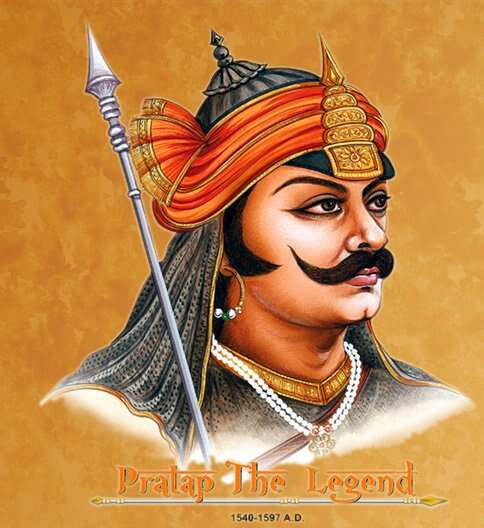
- Description:
- Rana Pratap Singh also known as Maharana Pratap was born on May 9th 1540 in Kumbhalgarh, Rajasthan.
- He was the 13th King of Mewar and was the eldest son of Udai Singh II
- Maharana Udai Singh II ruled the kingdom of Mewar, with his capital at Chittor.
- Udai Singh II was also a founder of the city of Udaipur (Rajasthan).
- Battle of Haldighati:
- The Battle of Haldighati was fought in 1576 between Rana Pratap Singh of Mewar and Raja Man Singh of Amber who was the general of the Mughal emperor Akbar.
- Maharana Pratap fought a brave war, but was defeated by Mughal forces.
- It is said that Maharana Pratap’s loyal horse named Chetak, gave up his life as the Maharana was leaving the battlefield.
- Reconquest:
- After 1579, the Mughal pressure relaxed over Mewar and Pratap recovered Western Mewar including Kumbhalgarh, Udaipur and Gogunda.
- During this period, he also built a new capital, Chavand, near modern Dungarpur.
Toda Embroidery
Why in News
In the wake of the Covid-19, Toda artisans from the Nilgiris have come forward to use their traditional skills in making face-masks and to help people ward off the infection and also provide Todas with livelihood.
Key Points
- Toda Tribe is a pastoral tribe of the Nilgiri Hills of southern India.
- The Toda language is Dravidian but is the most unusual and different among the languages belonging to the Dravidian family.
- They live in settlements of from three to seven small thatched houses.
- They traditionally trade dairy products, as well as cane and bamboo articles, with the other Nilgiri peoples.
Toda Embroidery
- In the Toda language it is called pohor.
- The traditional Toda dress is a distinctive shawl which is called putukuli.
- Considered a grand garment, it is only worn for special occasions like visits to the temple, festivals and finally as a shroud.
- The embroidery is done by Toda women and has distinctive red and black (and occasionally blue) thread work in geometric designs on unbleached white cotton fabric.
- It has got a Geographical Indications (GI) Tag.
Automated UV Systems
Why in News
Recently, the Research Centre Imarat (RCI), has developed an automated contactless UVC (short-wavelength ultraviolet light with wavelengths between 200-280 nanometers) sanitisation cabinet, called Defence Research UltraViolet Sanitiser (DRUVS) and an automated UVC currency sanitising device, called NOTESCLEAN.
- RCI is a Hyderabad based Defence Research and Development Organisation (DRDO) premier lab.
- Earlier, DRDO had developed UV Blaster (ultraviolet disinfection tower) for rapid and chemical free disinfection of high infection prone areas.
Defence Research Ultraviolet Sanitiser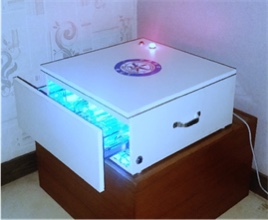
- It has been designed to sanitise mobile phones, iPads, laptops, currency notes, cheque leafs, challans, passbooks, paper, envelopes, etc.
- The DRUVS cabinet has a contactless operation which becomes crucial to contain the spread of Covid-19 and other viruses.
- It has proximity sensor switches, clubbed with drawer opening and closing mechanism which makes its operation automatic and contactless.
- It provides 360 degree exposure of UVC to the objects placed inside the cabinet and it automatically goes into sleep mode after the sanitation process.
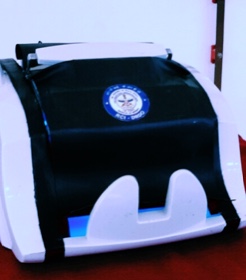
NOTESCLEAN
- The device picks the note inserted from the input slot and makes them pass through a series of UVC lamps for complete disinfection.
- It will save a lot of time because disinfection of each currency note by DRUVS or any other sanitising process is a time consuming process.
Defence Research and Development Organisation
- It works under the administrative control of the Ministry of Defence.
- Objective: To establish a world class science and technology base for India and provide Indian Defence Services decisive edge by equipping them with internationally competitive systems and solutions.
- It was established in 1958 after combining Technical Development Establishment (TDEs) of the Indian Army and the Directorate of Technical Development & Production (DTDP) with the Defence Science Organisation (DSO).
National Technology Day
Why in News
India observes its National Technology Day on 11th May every year.
Key Points
- The day which was first observed on 11 May, 1999, aims to commemorate the scientific and technological achievements of Indian scientists, engineers. The day was named by the former Prime Minister Atal Bihari Vajpayee.
- Every year, the Technology Development Board of India (a statutory body under the Ministry of Science and Technology) celebrates the day by awarding individuals with National Award for their contribution to science and technology in India.
- The focus this year is ‘Rebooting the economy through Science and Technology.’
Significance
- It is the day India successfully tested nuclear bombs in Pokhran on May 11, 1998.
- India successfully test-fired its Shakti-1 nuclear missile in operation called Pokhran-II, also codenamed as Operation Shakti.
- The nuclear missile was tested at the Indian Army's Pokhran Test Range in Rajasthan. This was the second test which was conducted after Pokhran-I codenamed Operation Smiling Buddha, in May 1974.
- On the same day, India performed a successful test firing of the Trishul Missile (surface to air short range missile) and had test flown the first indigenous aircraft – ‘Hansa – 3’.
